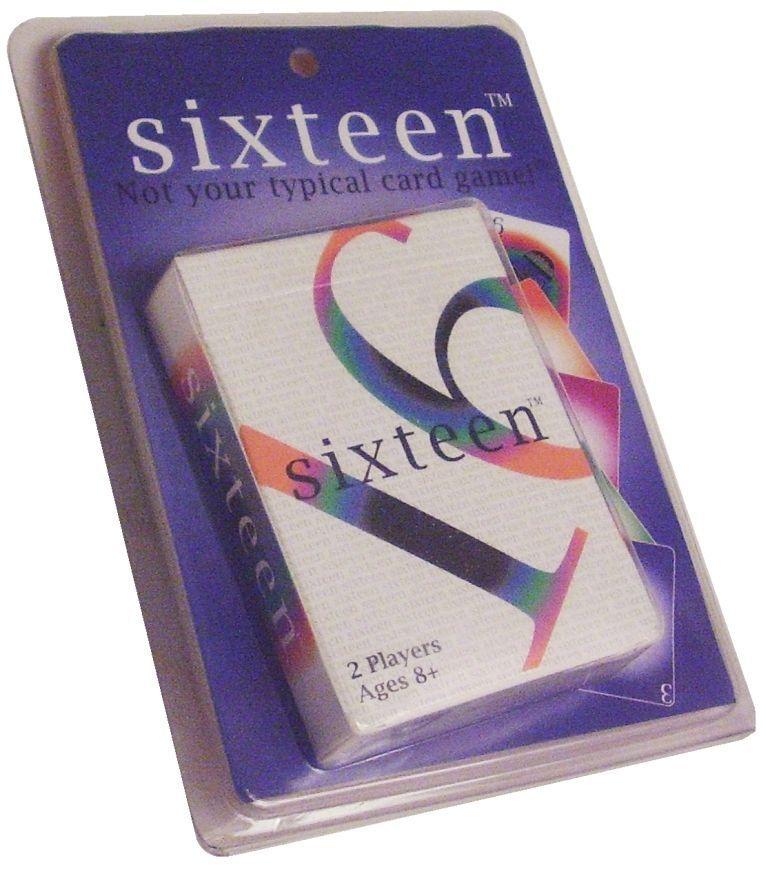Sixteen

Sixteen
Sixteen is an original card game for two players, ages 8 and older. It is easy to learn (about 5 minutes) and takes about 15 minutes to play, though players will find themselves wanting to play again and again before they put the deck away.
Each player is dealt three cards. The remaining cards are placed face-down in the middle of the table as the draw pile. The cards are numbered 0-6. There are two of every card, but only one zero card for each suit. There are also two wild cards. Players take turns, picking a card, and then adding a card to a fanned-out, face-up play pile.
There are two ways to win a set: when the face-up cards total 16, or when the last three cards in the win pile are all the same color or number. So, you have to pay a lot of attention to what's in the pile, as well as what's in your hand, as well as make some educated guessing about what could very possibly be in you-know-who's hand. If the play pile goes over 16, a "bust" is declared and the other player gets the win. The player with the most sets when all cards have been played wins the round.
All of this results in some rather delicious strategic implications. The game can become quite competitive, but the elegance of the game, and the element of luck, keep the competition focused, and light-hearted.
The instructions describe four optional play variations, one of which extends the game play to younger children (perhaps as young as 6), but the game plays best with the recommended ages.
Each player is dealt three cards. The remaining cards are placed face-down in the middle of the table as the draw pile. The cards are numbered 0-6. There are two of every card, but only one zero card for each suit. There are also two wild cards. Players take turns, picking a card, and then adding a card to a fanned-out, face-up play pile.
There are two ways to win a set: when the face-up cards total 16, or when the last three cards in the win pile are all the same color or number. So, you have to pay a lot of attention to what's in the pile, as well as what's in your hand, as well as make some educated guessing about what could very possibly be in you-know-who's hand. If the play pile goes over 16, a "bust" is declared and the other player gets the win. The player with the most sets when all cards have been played wins the round.
All of this results in some rather delicious strategic implications. The game can become quite competitive, but the elegance of the game, and the element of luck, keep the competition focused, and light-hearted.
The instructions describe four optional play variations, one of which extends the game play to younger children (perhaps as young as 6), but the game plays best with the recommended ages.
Player Count
2
-
4
Playing Time
10
Age
8
Year Released
2007
